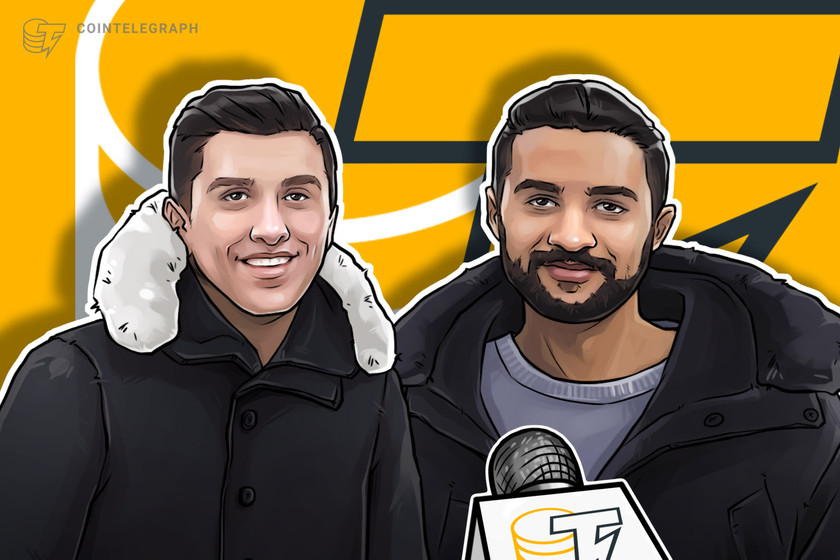
'It's like your NFT is the wine cellar, but it's in your wallet,' says the staff from World Wide Wines.
Many exciting developments are coming to the space of nonfungible tokens, or NFTs, ranging from Metaverse NFTs to fantasy soccer digital collectible cards and up to monster-battle NFT games. In fact, Cointelegraph Research predicts NFT sales will hit a record high of $17.7 billion this year.
But one French startup is taking more of an ambitious approach with wine NFTs. In an exclusive interview with Cointelegraph, Samuel Balthazard and Yacin Kharroubi, the chief executive officer and chief product officer of World Wide Wines, respectively, discussed the logistics of making French wine available on the blockchain. Samuel is the descendant of the family operating the Château du Rouët vinery in Provence, which has existed since 1840. The project itself is built on the Elrond network.
At 300 people we close the Wine List (it will reopen later with new conditions)
— World Wide Wine NFT ⚡️ (@wwwineNFT) November 30, 2021
More details in our Discord : https://t.co/Oj6s9i8HGS
This is just the beginning of World Wide Wine and an advice… Never Forget to Taste a wine #NFT #Elrond
Cointelegraph: A bottle of wine will cost differently, for example, in France than in China due to difference in taxes and customs duties. So what's the setup here with regards to such payments?
Samuel Balthazard: So, for the system, for the taxes, we have created a token named GRAPES. And when you buy an NFT, you stake some token in exchange for the permit to have the bottle. Then, when you want to take the bottle back [delivered], we use a system to know if there [are] enough GRAPES based on your country. For example, if you are in China [where the import taxes are high], you need to have more GRAPES tokens to pay the taxes. If you are in France, you are supposed to need fewer tokens.
CT: So, where are you guys in terms of product development? Are you guys already selling these NFTs or just building like the prototypes?
Yacin Kharroubi: So yeah, actually, we have been building this project for several months. But, we made the official announcement 10 days ago. So now, we have created all of the design We are going to launch the first drop of 300 NFTs, and we have already managed some partnerships with NFT collections and wineries for the moment.
CT: How will you guys ensure the safety and security of the bottles as there is an off-chain risk?
SB and YK: Yeah. For that, behind every NFT, there are three real bottles of wine because of the safety and the security. For these three bottles, we put them in three different vineyards, like we want to work at a cloud system, but with bottles.
Securing each NFT in a three-bottle setup is the first step of the process because we want to assure that if one bottle is lost or two bottles are missing, we still have the third one, but the customer will only own one bottle. We buy three bottles. But when you wait for one bottle, if nothing happens with each other, they go to the marketplace. So, and with NFTs, you have discounts on this marketplace. So you can go [...] on the marketplace and buy a discounted bottle. And the first part [is] we want to create a 'wine menu.' And it will be like an invitation to wine events or a discount in a wine bar or things like that.
The second step in terms of safety is about insurance. When you stake an NFT, you have some GRAPES. 30%, it's for fees; 30%, it's for the owner of the wine, stock, storage; 30%, it's for the vineyard. Meanwhile, the remaining 10% goes to us. So if the vineyard lost a bottle, he does not receive his GRAPES, so he has an [economic] interest in taking care of the bottle. And you can claim your bottle when you have enough GRAPES to pay the fees and shipping fee.
CT: It says that each NFT will represent a different type of wine on your site. So how will you guys determine the quality of wine?
SB and YK: Yeah, for so for this part, it's about data and data science. So, in the beginning, we wanted to show the wine's vintage as an attribute, but vintage is too subjective and too difficult for customers to choose. So we decided to create an attribute based on quality. And for this attribute, we're going to use historical data, but we will create a prediction model. So analyzing all the data which allows us to determine quality, for example, the weather, the rain, and sunshine of the vineyards where grapes are grown.
Related: Despite the bad rap, NFTs can be a force for good
CT: Would you guys like to include any other statements or visions about what you are doing?
SB and YK: So we want to have three main objectives; first, digitalize the wine ecosystem, then, educate the people on how to spot good wine, and finally, gamification of the wine ecosystems [via the Metaverse]. We have a lot of ideas, for example, one wine collection of NFTs and then another. The ultimate step is to arrive at the real wine market with real wineries.
The last part, I think it's important, it's why the vineyards would be interested? The first part, it's about the second market. So, for example, when the Domaine Château du Rouët sells a wine, they control the first market. But, if the bottle appreciates in value over time, the winery doesn't control that. And with NFTs, you can put royalties on the second market, so Domaine Château du Rouët gets a commission from resales
https://ift.tt/3GbyhFc
Comments
Post a Comment